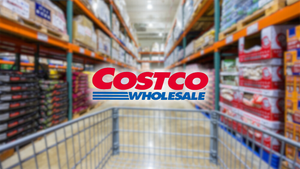
2025 has marked a pivotal shift in the American psyche, as the pervasive and relentless rise in the cost of living has officially eclipsed health-related anxieties to become the nation's foremost concern. From the grocery aisle to housing markets, the financial squeeze is a daily reality for millions, reshaping household budgets, consumer behaviors, and the broader economic landscape. This escalating crisis signals a deep-seated economic unease, threatening to redefine the priorities of policymakers and challenge the resilience of the U.S. economy.
The immediate implications are profound: a palpable deceleration in consumer spending on non-essentials, a reevaluation of major life decisions like home purchases, and a growing reliance on credit to bridge widening financial gaps. As inflation persists and wages struggle to keep pace, the purchasing power of the average American paycheck continues to erode, fostering an environment of widespread financial anxiety and uncertainty that demands urgent attention from both the private and public sectors.
The Unfolding Crisis: How Everyday Costs Became a National Priority
The ascent of the cost of living to the summit of national concerns isn't a sudden phenomenon but the culmination of persistent economic pressures. Multiple surveys conducted throughout 2025 underscore this stark reality. A March 2025 Clever Real Estate survey revealed a staggering 95% of Americans are worried about price increases, with 85% anxious about their personal finances. Top concerns cited were rising insurance costs (95%), inflation (94%), and the overall state of the U.S. economy (89%). These figures are corroborated by an Ipsos/Reuters poll in April 2025, where 61% of Americans felt the cost of living was on the wrong track.
This crisis is multifaceted, touching every aspect of daily life. Housing costs, in particular, have become a flashpoint, with a May 2025 poll indicating that 69% of adults attribute increased homelessness primarily to rising housing expenses. Since 2000, housing costs have surged by 118%, healthcare by 200%, and college tuition by 300%, while average wages have only climbed approximately 65%. This stark disparity has left middle-income Americans particularly vulnerable, with a July 2025 Primerica survey showing 65% believe their income hasn't kept pace with expenses. The confluence of "sticky" inflation, driven by services, wages, and proposed tariffs, alongside stagnant real wage growth, paints a grim picture for household budgets.
The timeline leading to this point includes years of modest wage growth failing to match the consistent upward trajectory of essential goods and services. The post-pandemic inflationary surge, exacerbated by supply chain disruptions and geopolitical tensions, has entrenched higher prices. Furthermore, potential government policies, such as the Trump administration's projected 2025 tariffs, which could reduce real GDP growth by 0.9 percentage points and push the average U.S. tariff rate to 22.5%, are seen by some as potentially contributing to, rather than alleviating, the cost of living crisis. This environment has fostered fears of stagflation, where persistent inflation coexists with slowing economic growth.
Key stakeholders involved range from individual consumers bearing the brunt of price increases to major corporations navigating altered consumer spending patterns, and government bodies grappling with the challenge of implementing effective economic policies. Initial market reactions have been cautious, with sectors reliant on discretionary spending experiencing headwinds, while essential goods and services providers face scrutiny over pricing strategies. The pervasive financial anxiety is also manifesting in increased mental health strain, with studies showing a significant impact on sleep, relationships, and work performance.
Navigating the Headwinds: Who Wins and Who Loses in a Tightened Economy
The tightening grip of the cost of living crisis is creating a distinct divergence in the financial fortunes of public companies, carving out clear winners and losers across the market. As American consumers drastically reallocate their spending, businesses catering to essential needs and offering exceptional value are poised to thrive, while those reliant on discretionary purchases face significant headwinds.
On the winning side, consumer staples companies are proving resilient, if not flourishing. With household budgets under strain, consumers are flocking to discount retailers and brands known for affordability and bulk options. Giants like Walmart (NYSE: WMT) are benefiting as shoppers prioritize value, a trend Walmart has actively encouraged by committing to maintain low prices despite tariff-related cost pressures. Similarly, Costco Wholesale Corporation (NASDAQ: COST) continues to appeal to budget-conscious families seeking bulk savings, solidifying its reputation as an "inflation-fighter." Companies producing essential household goods and food, such as Procter & Gamble (NYSE: PG) and PepsiCo (NASDAQ: PEP), see consistent demand for their products, which are less likely to be cut from household budgets. Grocery chains like Kroger (NYSE: KR) are also benefiting from defensive demand and expanding their delivery services. Even deep-discount retailers like Dollar General (NYSE: DG) are likely to see increased foot traffic as consumers stretch every dollar.
Conversely, consumer discretionary sectors are facing a brutal reality. Consumers are deferring major purchases and significantly cutting back on non-essential items, impacting a wide array of businesses. Retailers like Target (NYSE: TGT) and Macy's (NYSE: M), which offer a broad range of general merchandise, are experiencing pullbacks in sales of apparel and home goods. Luxury retailers are generally anticipated to suffer as consumers resist price increases for high-end items. The housing market's woes, driven by elevated mortgage rates, are also cascading down to home improvement retailers such as The Home Depot (NYSE: HD) and Lowe's Companies (NYSE: LOW), as fewer home sales and renovations translate to reduced demand for their products. The hospitality and entertainment industries are also struggling, with consumers cutting back on dining out, travel, and leisure activities, impacting major restaurant chains like McDonald's (NYSE: MCD) and coffee giants like Starbucks (NASDAQ: SBUX), as well as food delivery services like DoorDash (NASDAQ: DASH).
The financial sector presents a more nuanced picture. While the surge in credit card debt, which exceeded $1.21 trillion as of Q2 2025 with rising interest rates, could ostensibly boost interest income for major banks and credit card issuers like Capital One (NYSE: COF), this comes with the significant caveat of increasing credit risk and rising delinquency rates, particularly among subprime borrowers. Meanwhile, the energy and utilities sectors may see some gains, as rising electricity costs, partly due to increased demand from AI data centers, contribute to overall living expenses, benefiting utility companies. Domestic oil and gas producers, such as ExxonMobil (NYSE: XOM), might also see a boost from tariffs on imported energy. However, manufacturers of durable goods, especially automakers like General Motors (NYSE: GM) and Ford (NYSE: F), face reduced demand for big-ticket items due to high prices and elevated interest rates on auto loans, leading to job losses and financial strain across the industry.
Shifting Tides: Industry Adaptation and Broader Economic Realities
The pervasive concern over the cost of living is not merely a transient consumer sentiment; it represents a fundamental shift impacting broader industry trends, reshaping competitive landscapes, and prompting significant policy deliberations. This crisis forces businesses to rethink their strategies, demanding agility and an unwavering focus on value to navigate an increasingly price-sensitive market.
Across industries, the ripple effects are profound. Businesses are grappling with a "double-edged sword" of declining consumer spending on non-essentials and surging operational costs. Manufacturing, agriculture, and hospitality sectors face dramatically higher energy, raw material, and logistics expenses. This is compounded by growing wage pressures, as employees demand higher pay to offset rising living costs, squeezing profit margins particularly for small and medium-sized enterprises. Central banks' efforts to curb inflation through interest rate hikes further exacerbate the situation by increasing borrowing costs for businesses, potentially stifling investment and growth. The persistent global supply chain disruptions, exacerbated by geopolitical events, continue to inflate prices, forcing businesses to adapt by exploring value-based pricing, offering more affordable alternatives, and optimizing their supply chains for efficiency rather than just cost. This environment also intensifies competition, as consumers are more willing to switch brands or retailers in pursuit of better value, challenging established loyalties.
From a policy perspective, governments are under immense pressure to respond. Fiscal policy interventions range from direct financial assistance and one-time bonus payments to temporary tax rebates and subsidies for essential commodities. Monetary policy, primarily through interest rate adjustments by central banks, aims to cool inflation, though this carries the inherent risk of slowing economic growth too much and potentially triggering a recession. Regulatory bodies are also increasing scrutiny on financial institutions, particularly regarding their treatment of vulnerable customers and the provision of forbearance options for struggling borrowers. Longer-term discussions involve structural reforms in areas like healthcare, housing, and energy independence, though the implementation and effectiveness of such measures remain subject to debate and can sometimes lead to unintended consequences, such as exacerbating inequality.
Historically, periods of high inflation and cost of living crises offer important parallels. The post-World War I and World War II eras saw significant inflation due to shifts in supply and demand. More recently, comparisons are drawn to the 1970s oil crisis, though key differences exist, such as the current absence of a similarly powerful organized labor movement to drive wage increases that keep pace with inflation. The present crisis is unique in its confluence of factors: global supply chain disruptions from the COVID-19 pandemic, soaring energy and food prices exacerbated by geopolitical conflicts, and persistent inflation driven by both demand and production costs. Its wider societal significance is stark, threatening to increase inequality, push more households into poverty, and strain social cohesion. The stress of financial insecurity is also manifesting as a public health crisis, contributing to poor nutrition, declining mental health, and exacerbating existing health conditions, all while demanding more from already stretched social and health services.
The Road Ahead: Navigating Persistent Pressures and Emerging Opportunities
The current cost of living crisis is not a fleeting challenge but a protracted economic phenomenon with both short-term pressures and long-term implications. While inflation rates may have moderated from their peaks, the cumulative effect of price increases means that the actual cost of living remains stubbornly high, necessitating strategic pivots for businesses, careful navigation by consumers, and nuanced policy responses from governments.
In the short term, households will continue to grapple with elevated prices for essentials and a decline in real wages. Vulnerable populations, particularly lower-income households, are disproportionately affected, facing increased difficulties in managing household bills and a growing reliance on debt to cover basic necessities. Economists anticipate that while inflation may ease, it will remain above historical averages for some time, meaning prices will rise less quickly, not necessarily fall. This sustained pressure will further entrench consumer behaviors focused on value and thrift, compelling businesses to double down on cost-saving strategies and value propositions.
Looking long term, the ripple effects are expected to persist for several years. Real household disposable income per person is not projected to return to pre-crisis levels until well into the latter half of the decade, if at all. This prolonged financial strain will likely exacerbate existing inequalities, pushing more individuals into long-term poverty and impacting health outcomes. For businesses, this translates to a sustained need for adaptation. Strategic pivots will include innovative pricing models, such as value-based offerings and service bundling, alongside aggressive operational cost reductions through increased efficiency and supply chain optimization. Diversifying revenue streams and enhancing customer loyalty through personalized rewards and data-driven insights will also be crucial for survival and growth. The accelerated shift to digital commerce, a trend amplified by the crisis, will make robust e-commerce capabilities non-negotiable.
The crisis presents both significant challenges and distinct opportunities for the market. Challenges include continued reduced consumer spending, higher operational costs squeezing profit margins, and difficulties in retaining brand loyalty as consumers prioritize value. Workforce management will also remain complex, with ongoing pressure to adjust wages to meet living costs. However, opportunities abound for innovators and adaptable businesses. This includes the development of affordable housing solutions, sustainable and cost-effective food production, and more accessible transportation and healthcare models. The growth of discount retailers, second-hand markets, and private-label goods will continue, as will the resilience of businesses providing essential goods and services. Consumer lending, while posing risks, may also see increased demand from financially strained households. Overall economic forecasts suggest reduced growth for some time, with central banks balancing inflation control with the risk of recession, while governments focus on targeted support measures rather than broad subsidies. Consumer behavior, marked by heightened budgeting, thriftiness, and a strong preference for value, is expected to be a lasting legacy of this crisis, compelling brands to make healthy and essential options more affordable.
A Lasting Impact: Navigating the New Economic Reality
The cost of living crisis of 2025 has unequivocally marked a turning point in the American economic narrative, establishing itself as the paramount national concern and triggering a cascade of shifts that will resonate for years to come. The era of cheap money and abundant discretionary spending appears to have given way to a new reality defined by persistent inflation, eroded purchasing power, and a heightened focus on value and essentialism.
The key takeaway for the market is clear: adaptation is paramount. Businesses that can effectively manage rising operational costs, offer compelling value propositions, and understand the evolving, more cautious consumer will be best positioned to weather the storm. Conversely, those reliant on pre-crisis consumer behaviors and discretionary spending face an uphill battle. The crisis has also underscored the critical role of government and central bank policies in mitigating economic hardship, with an ongoing debate between inflation control through monetary tightening and fiscal support for vulnerable populations. The social and health consequences, including increased inequality and mental health strain, highlight the broader societal costs beyond purely economic metrics.
Moving forward, investors should remain vigilant, closely monitoring several key indicators. The trajectory of inflation and subsequent actions by central banks will dictate interest rate environments and market liquidity. Consumer spending trends, particularly the resilience of essential goods versus the continued contraction in discretionary categories, will signal the health of household finances. Geopolitical developments, especially those impacting energy and commodity markets, remain critical wildcards. Furthermore, tracking real wage growth will be essential, as sustained increases are necessary for a genuine recovery in consumer purchasing power. Given the current volatility, diversification across asset classes, with a potential allocation to inflation hedges like gold (typically 5-10% of a portfolio), and seeking expert analysis will be crucial for navigating the complex landscape ahead. The cost of living crisis is not merely an economic event; it is a catalyst for enduring change, shaping how Americans live, spend, and plan for their futures.





